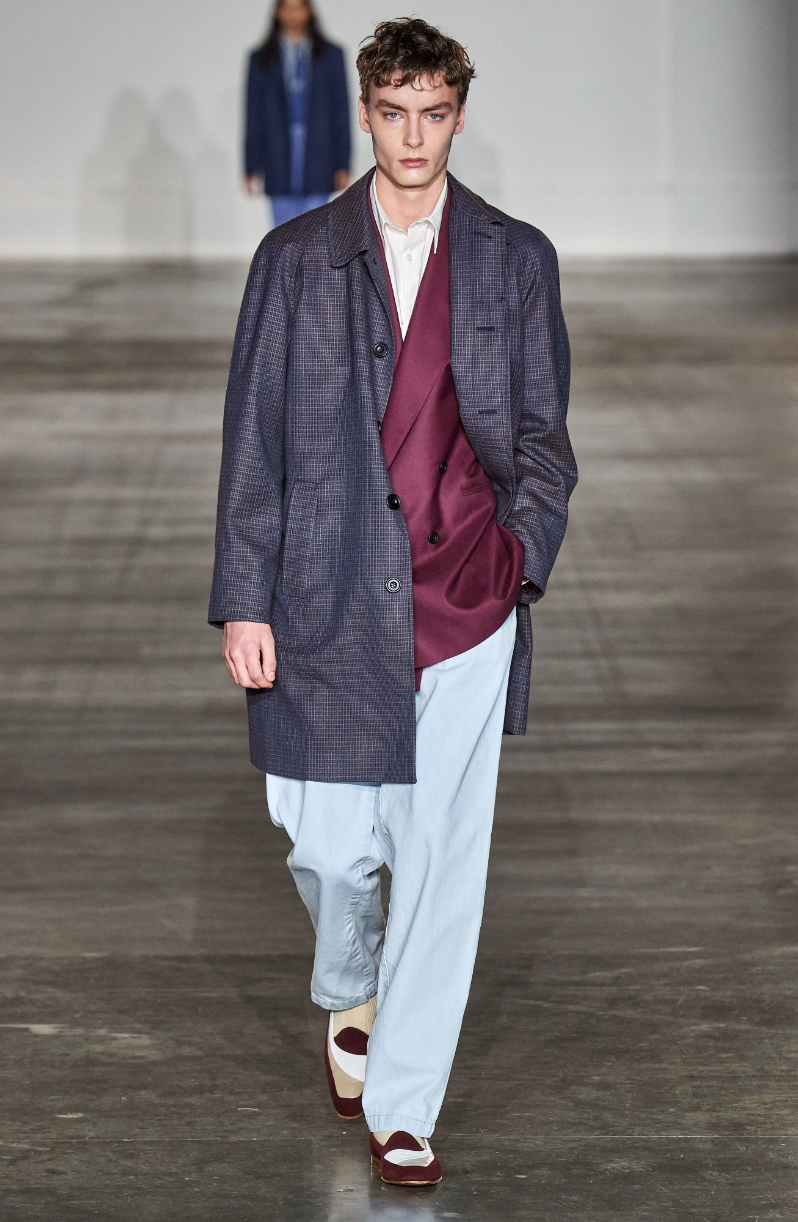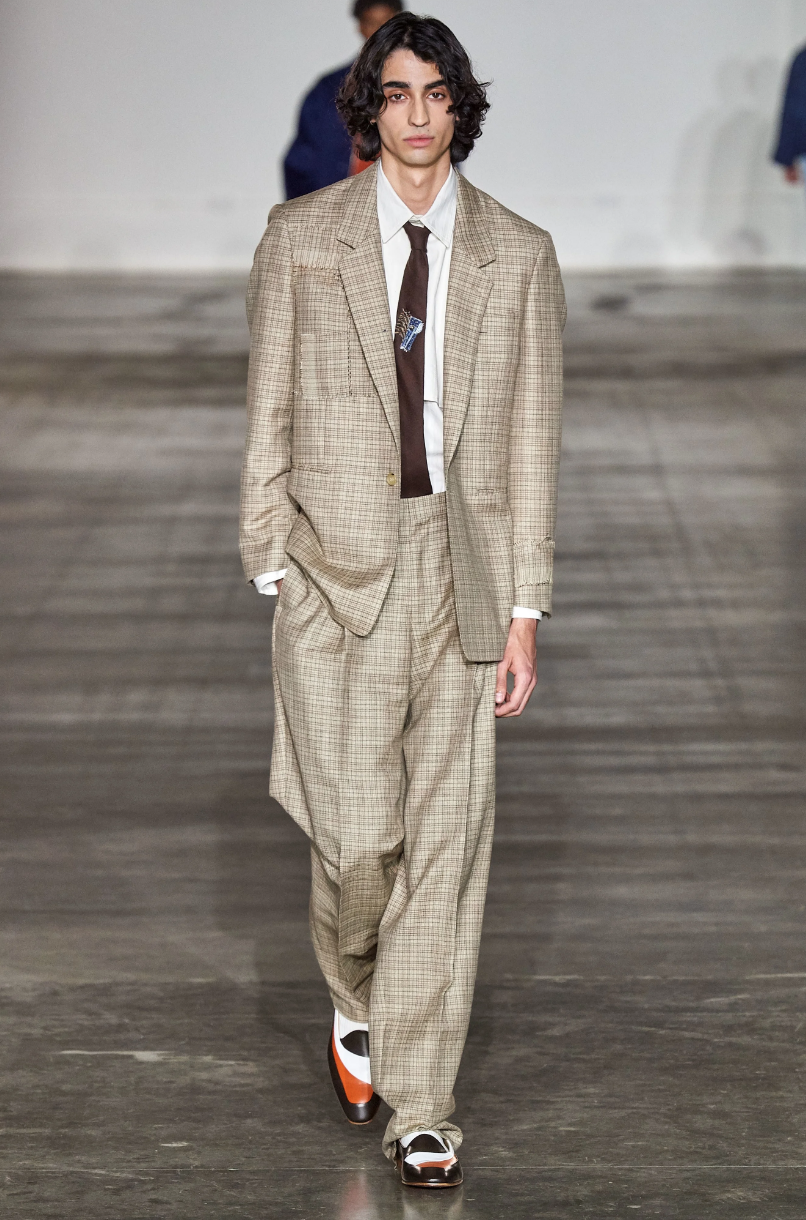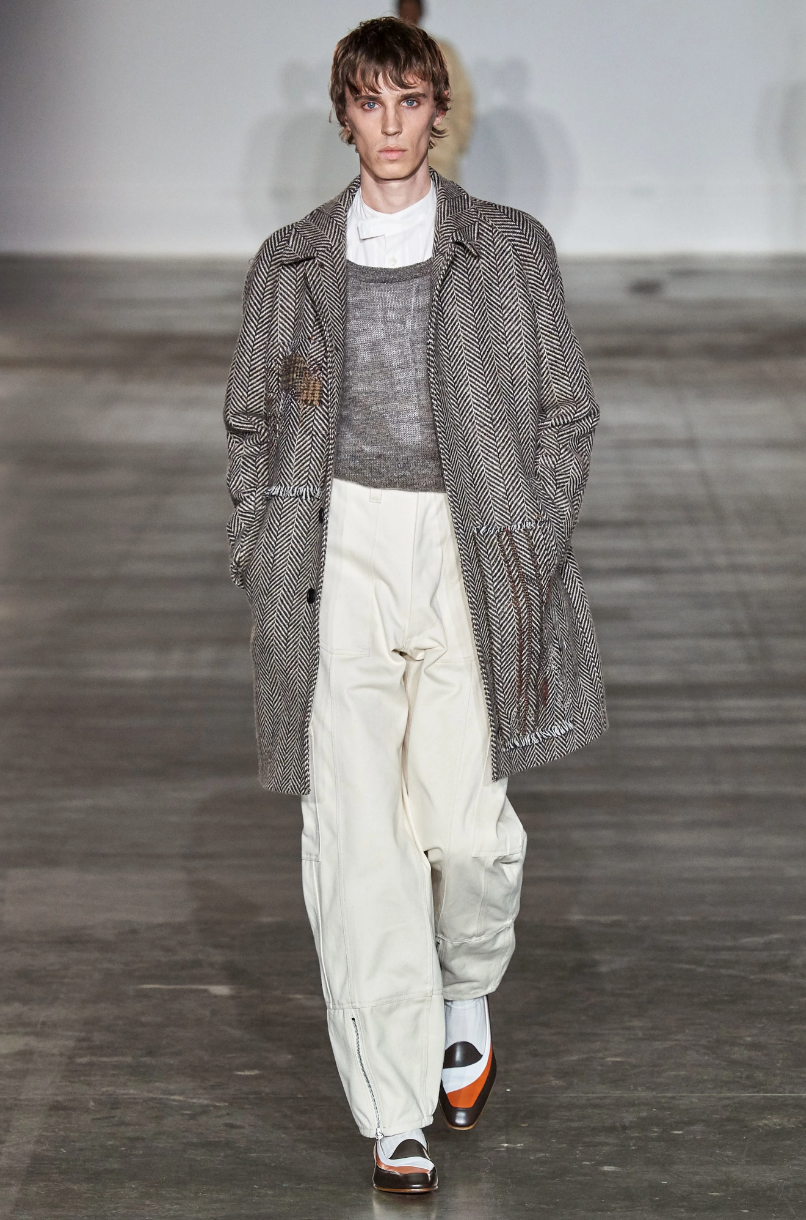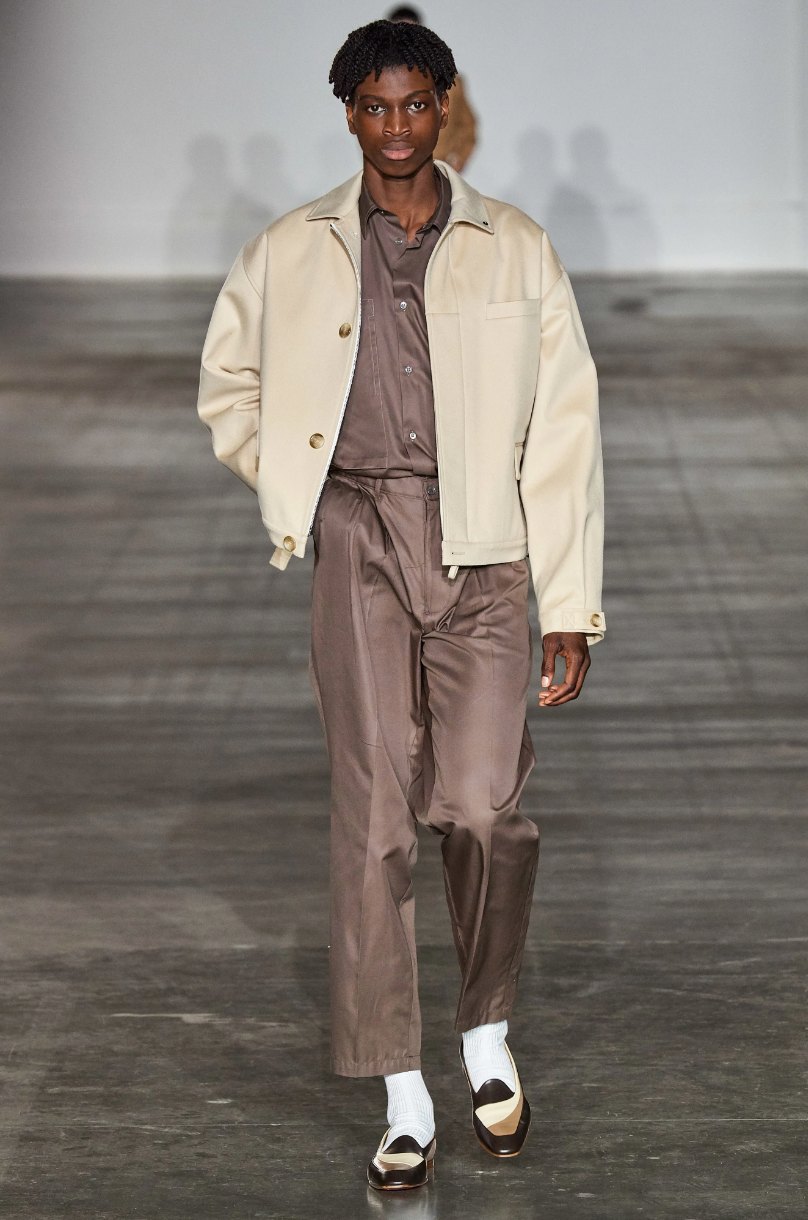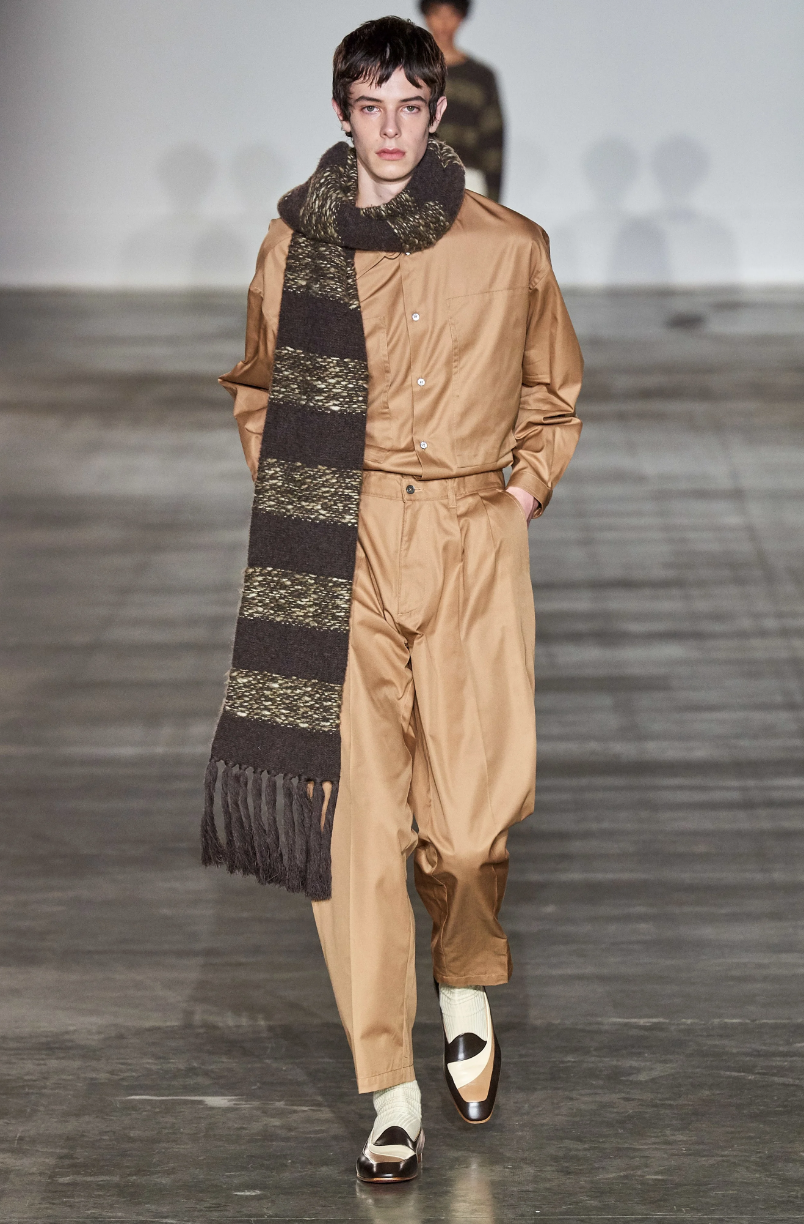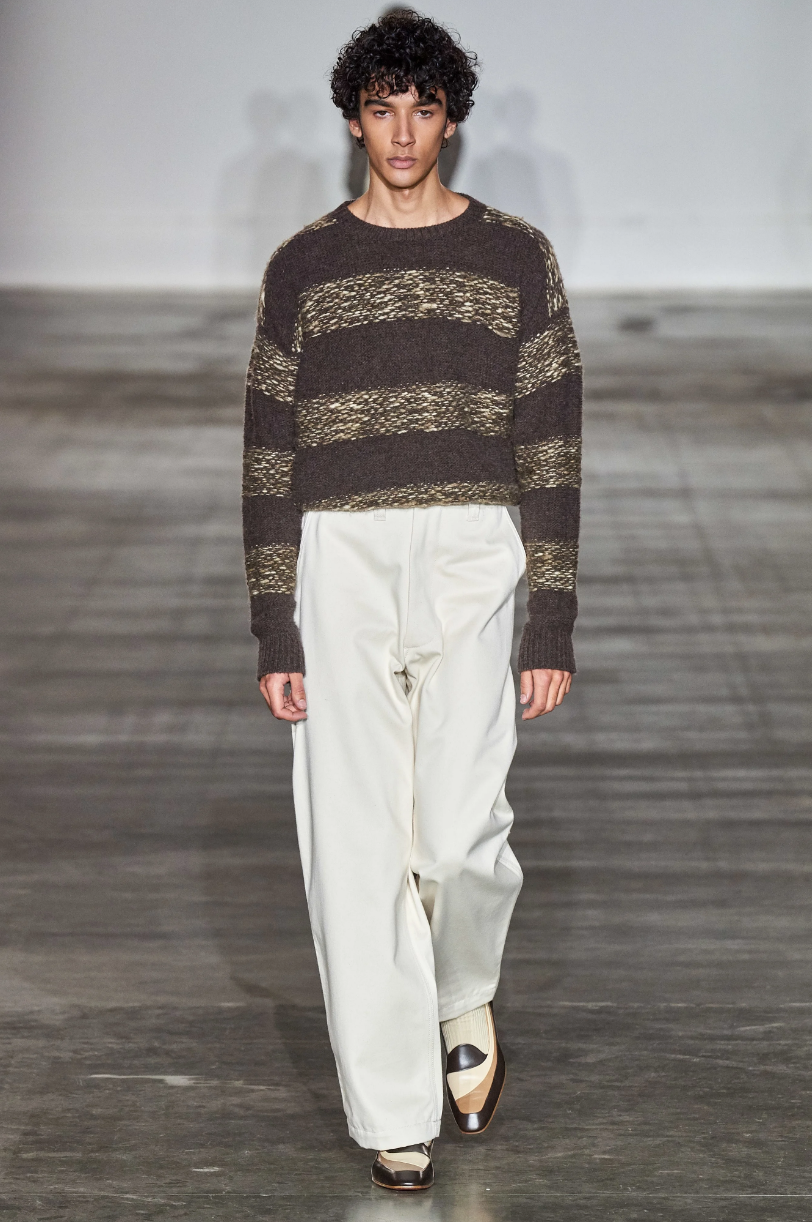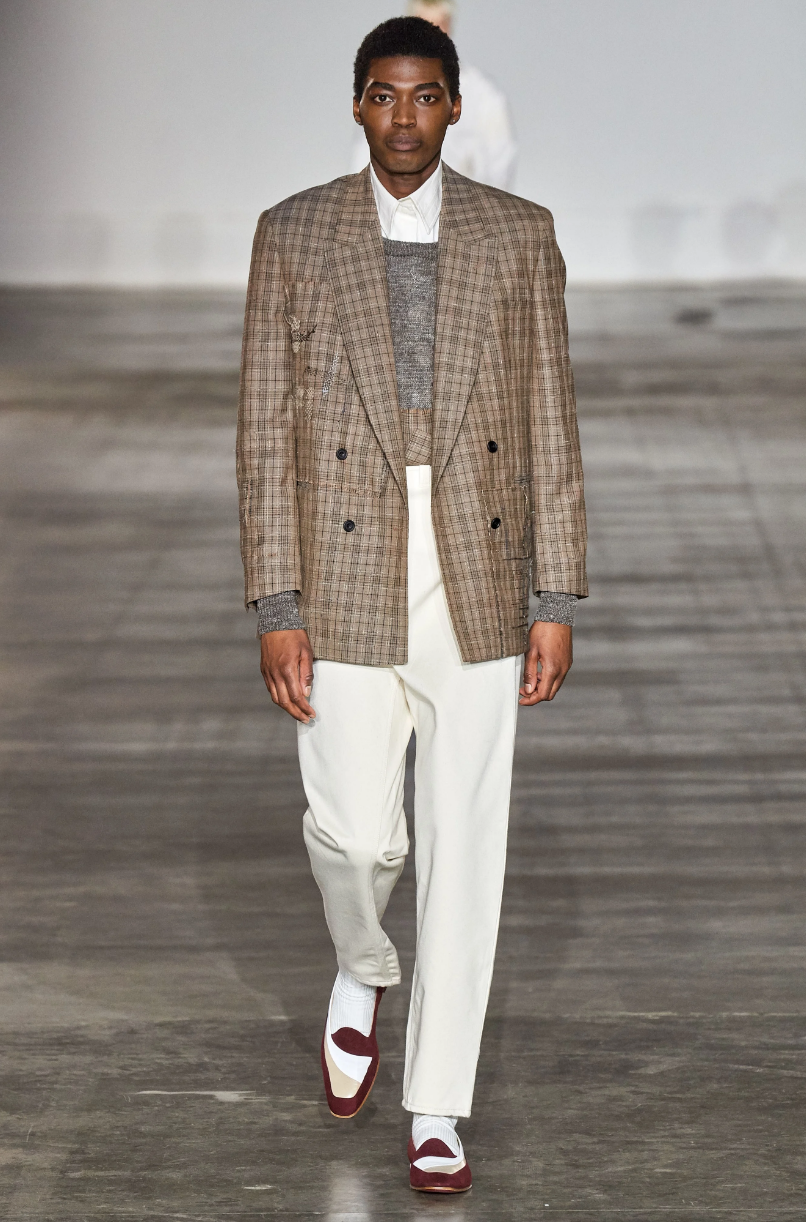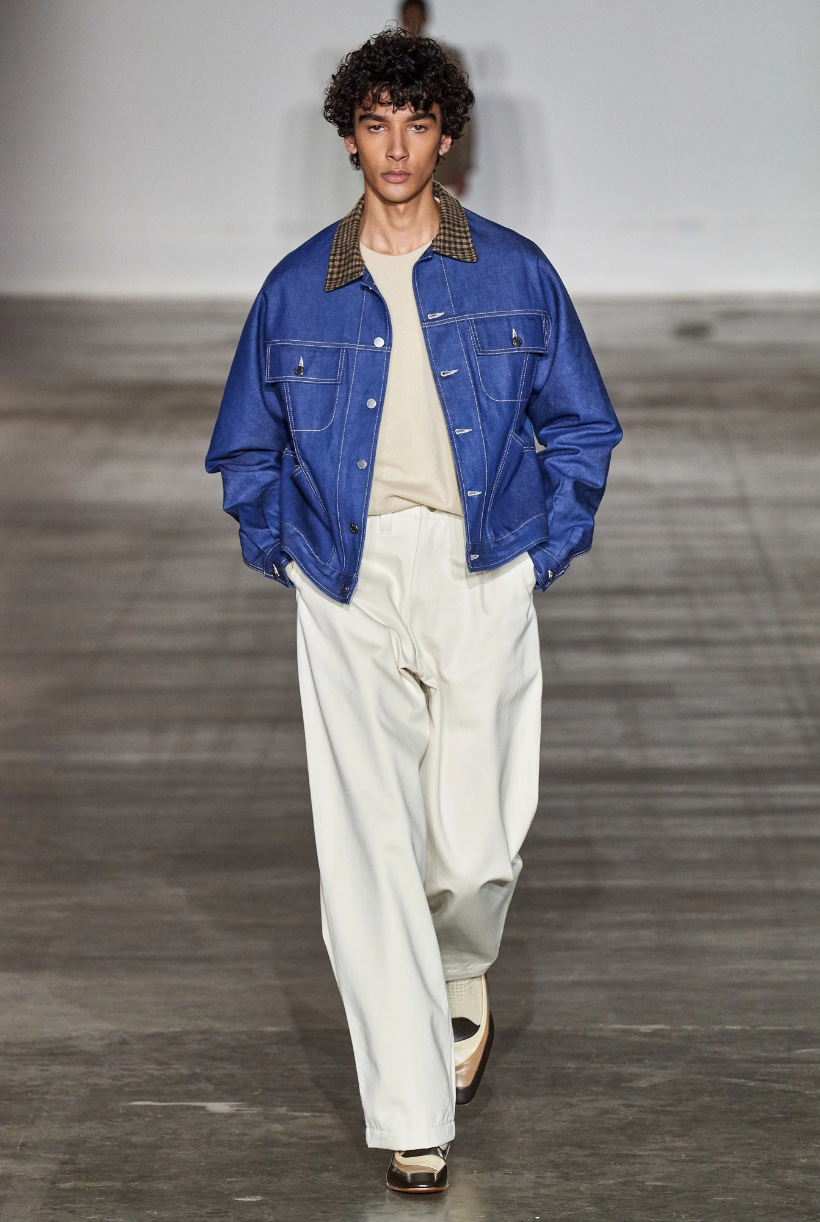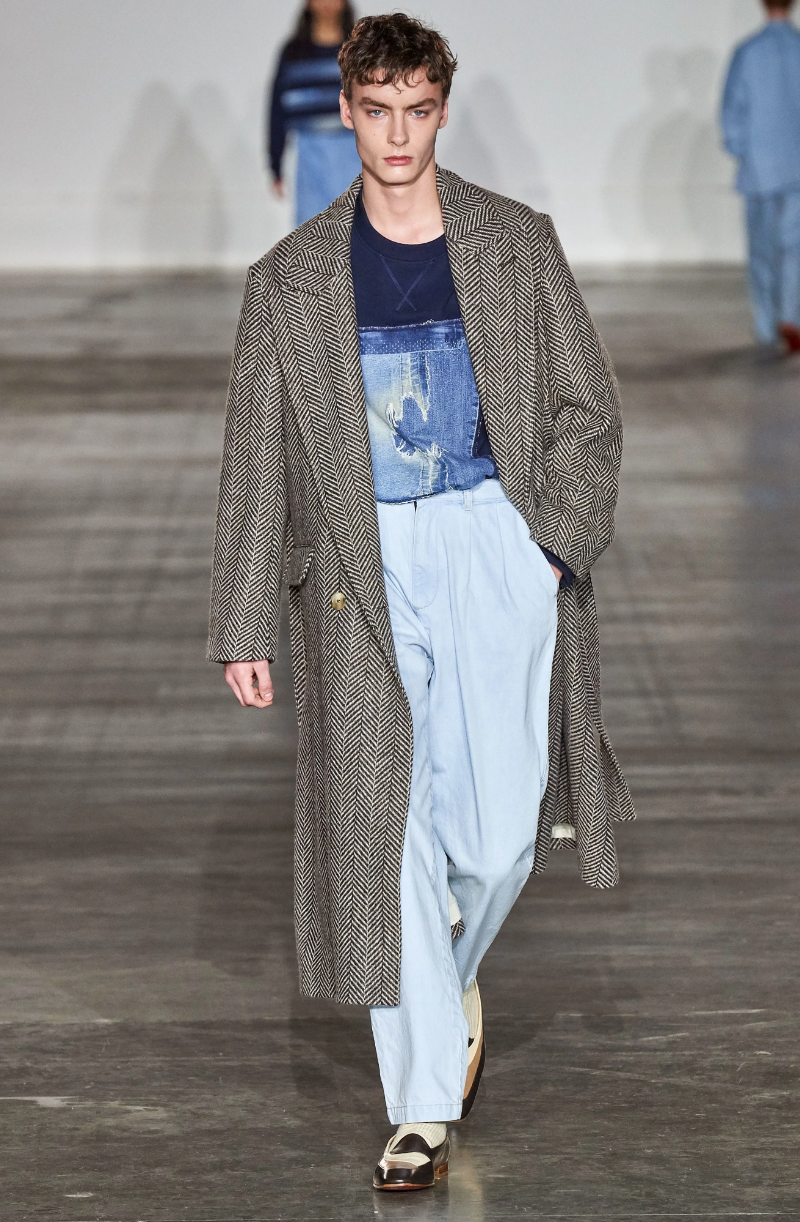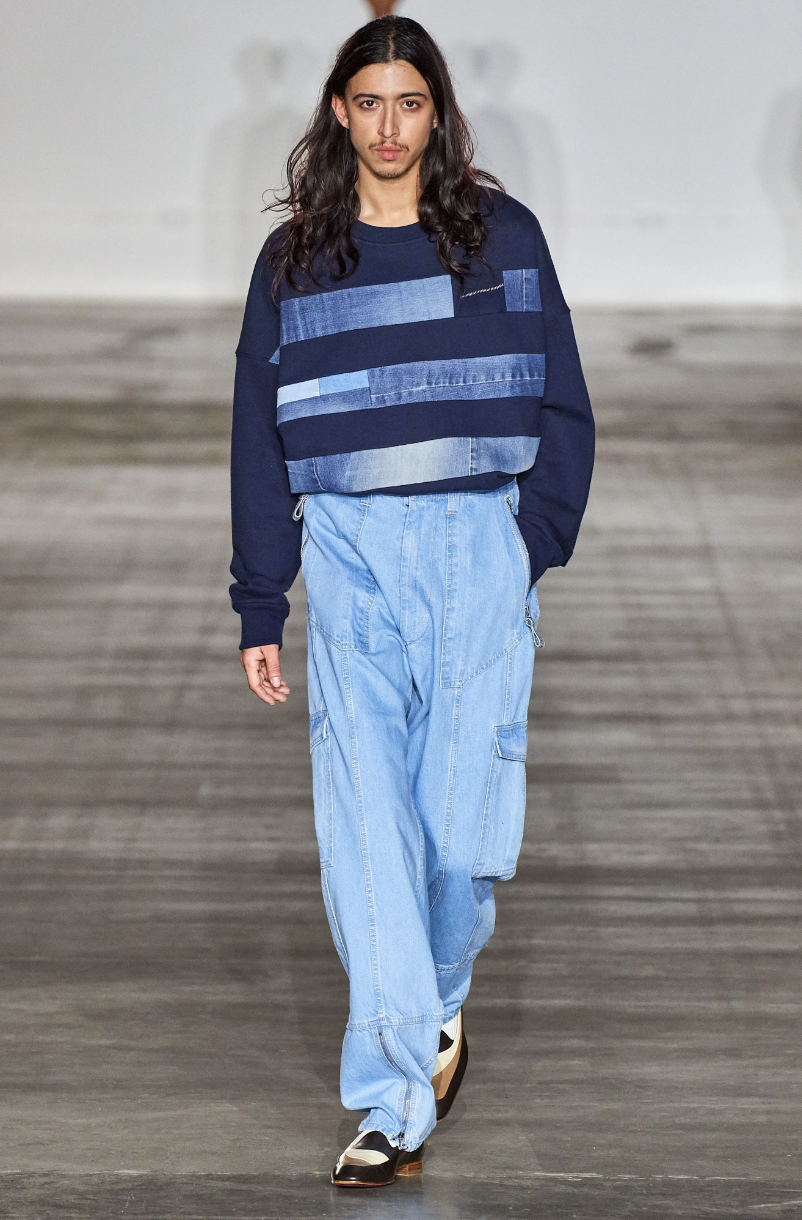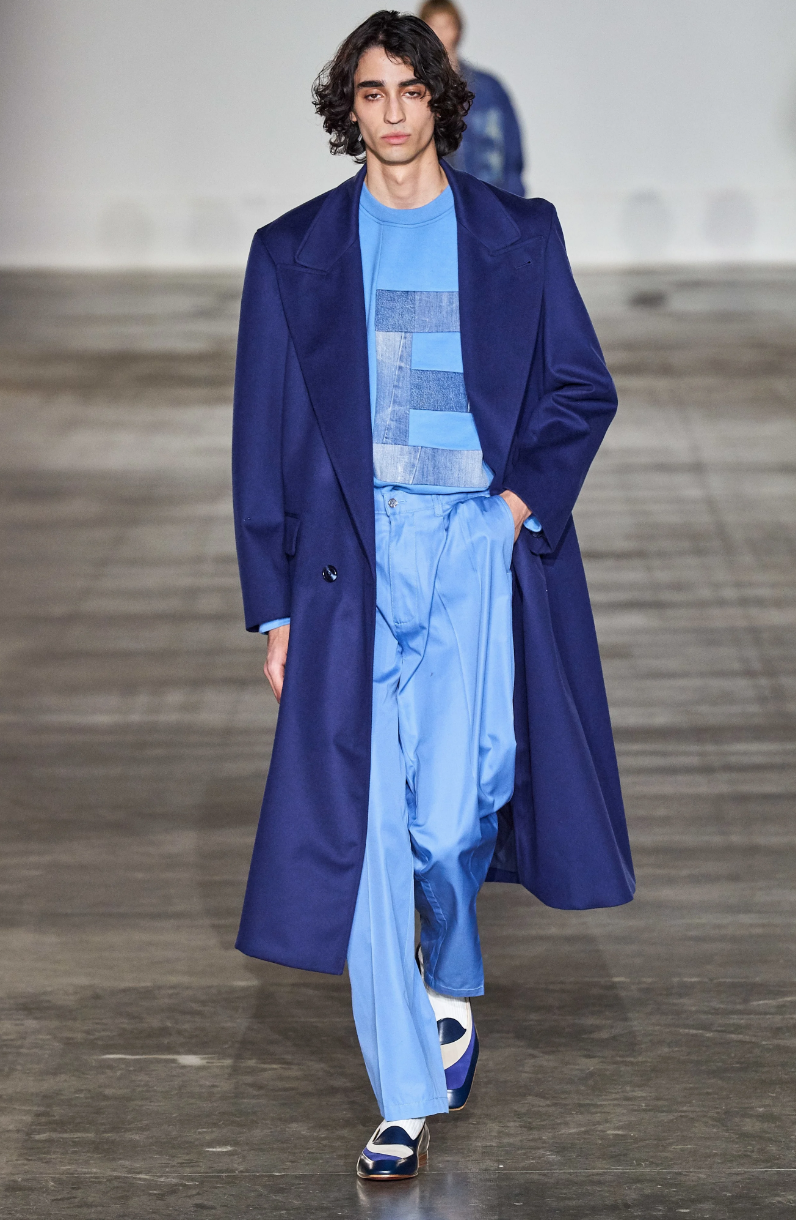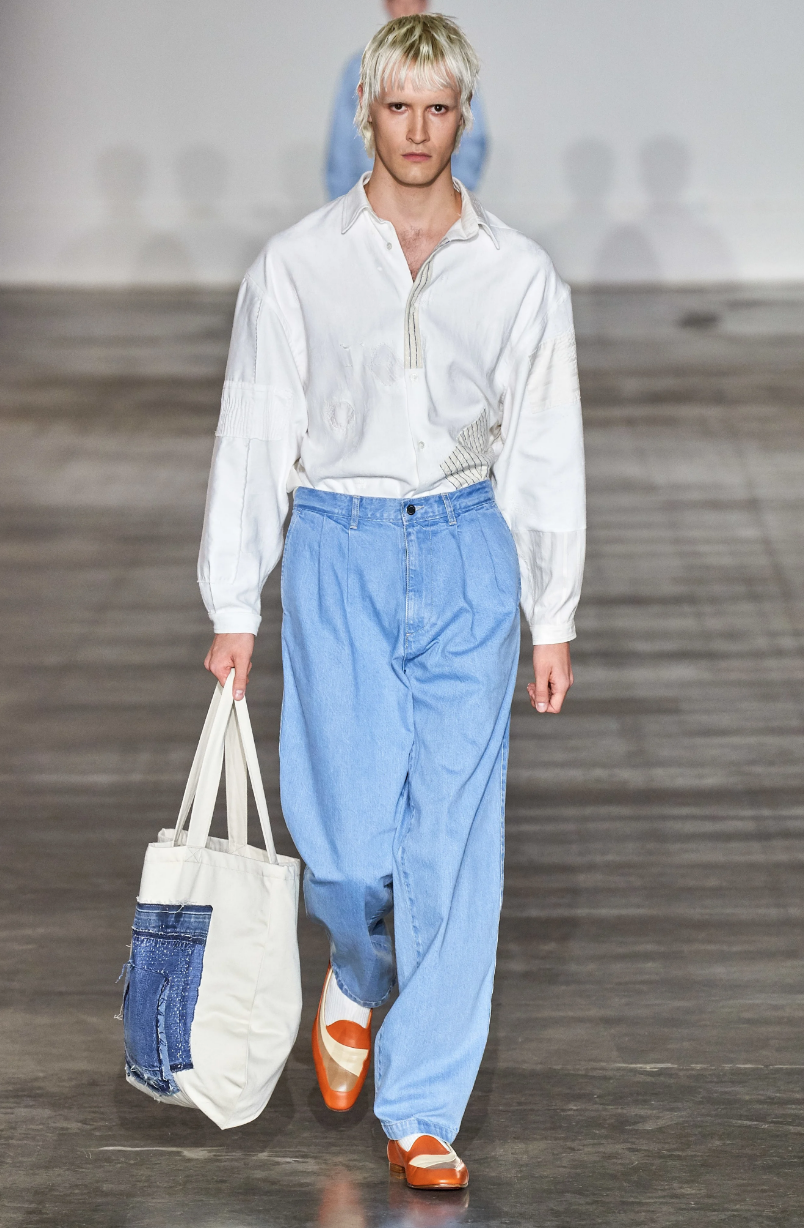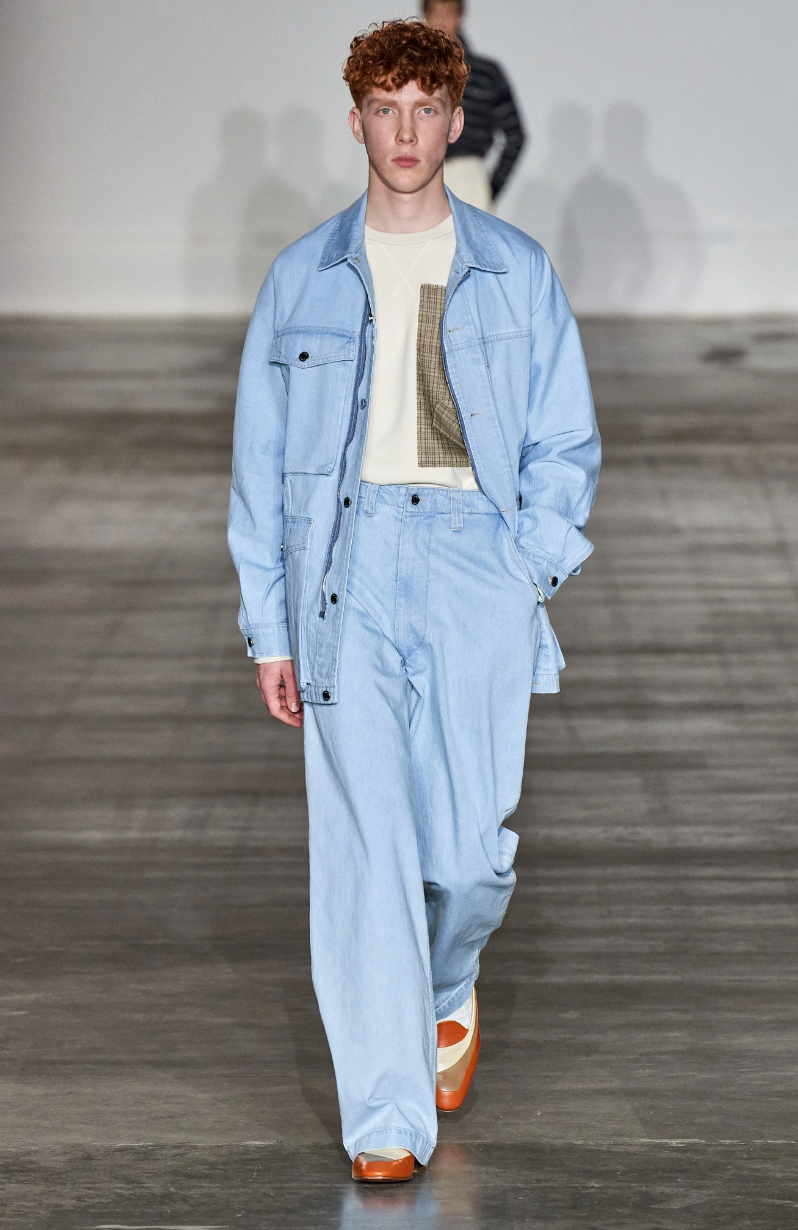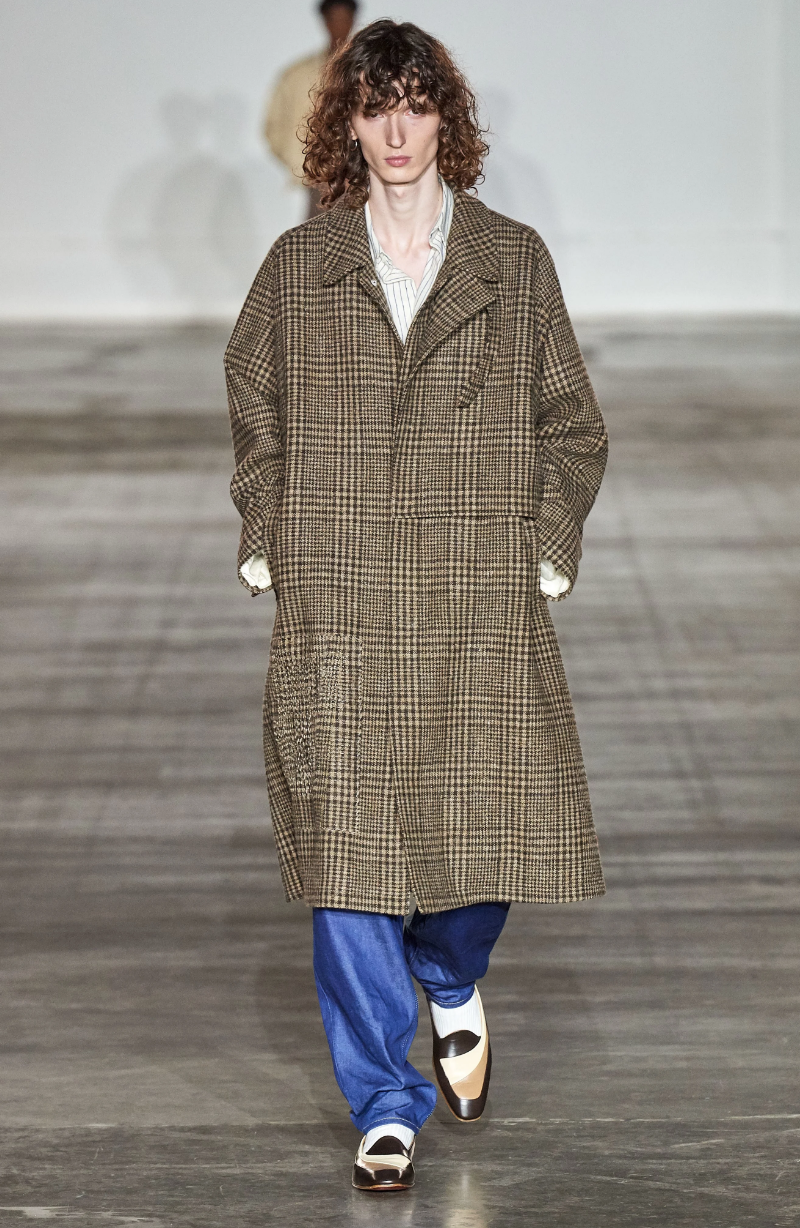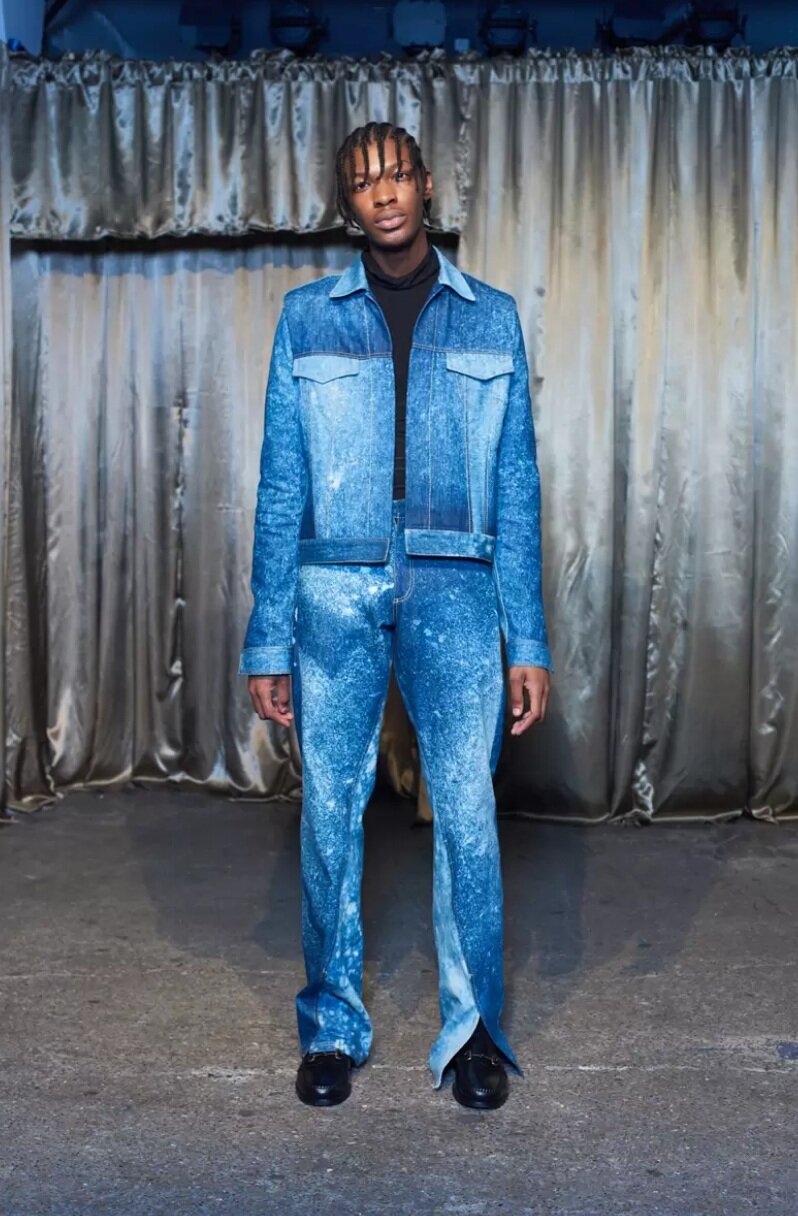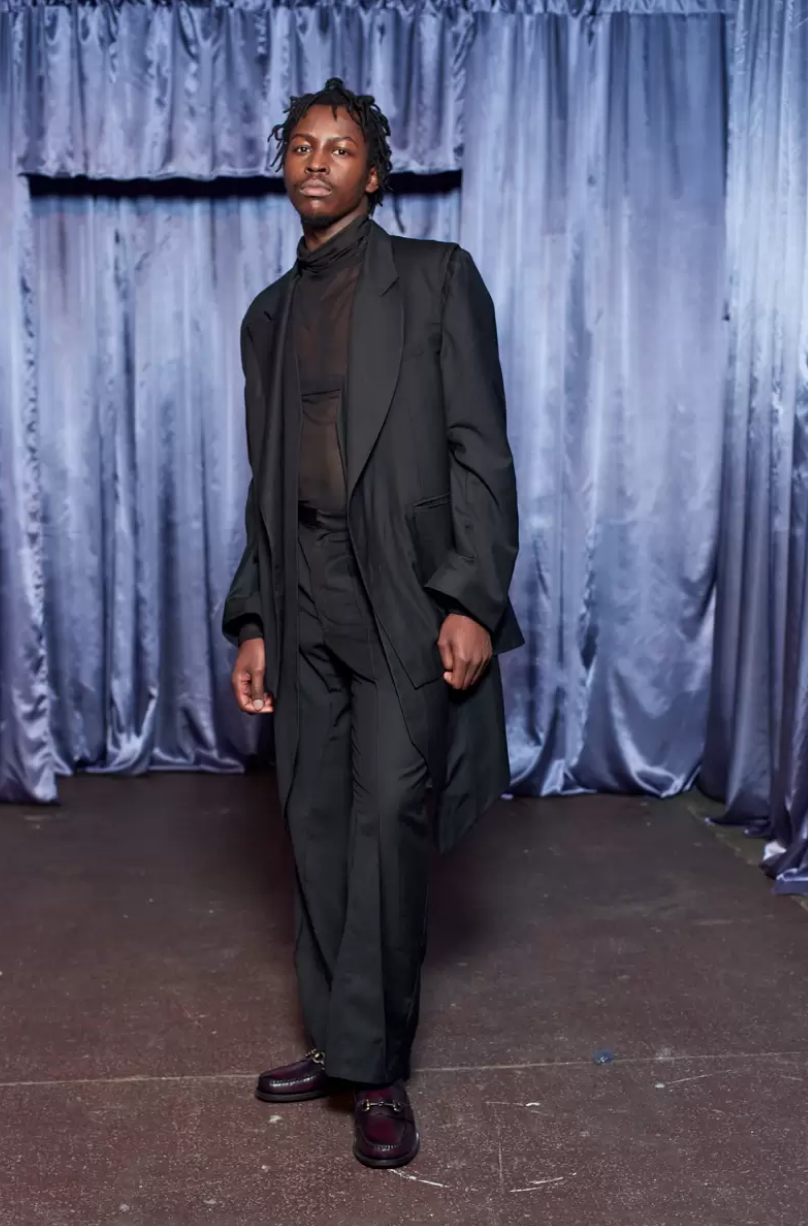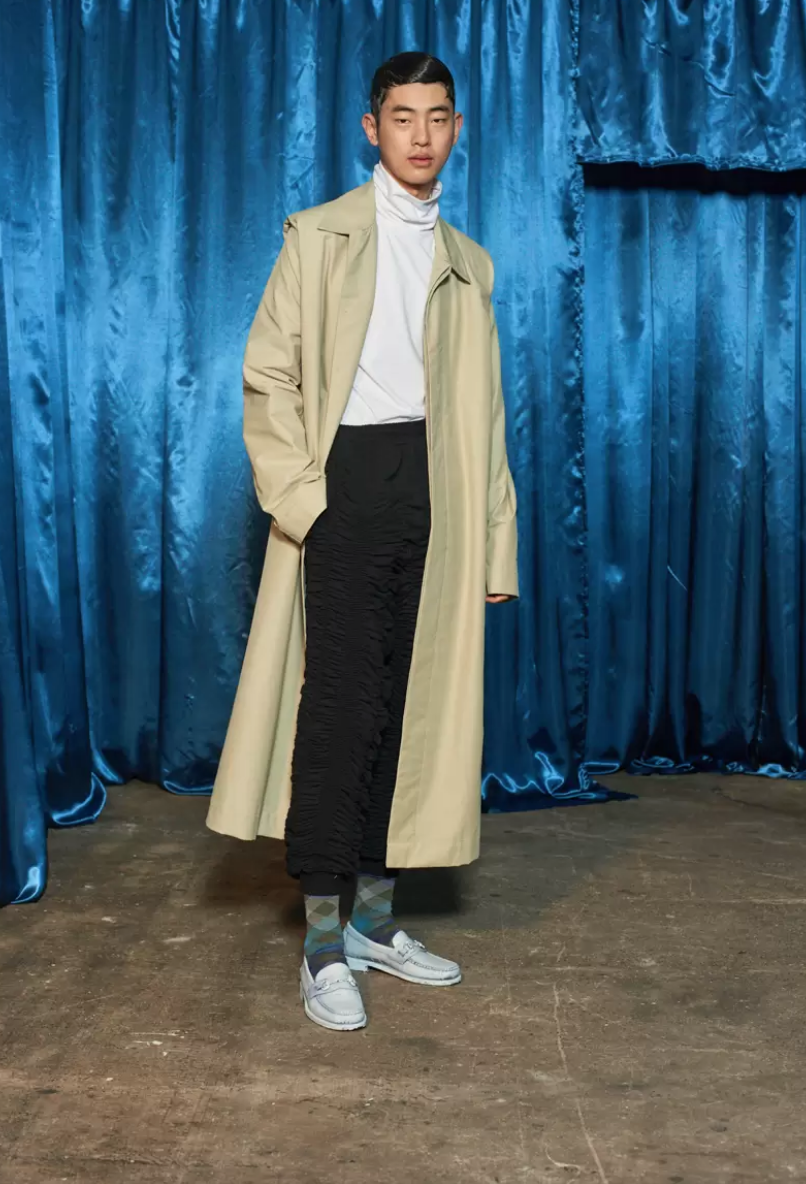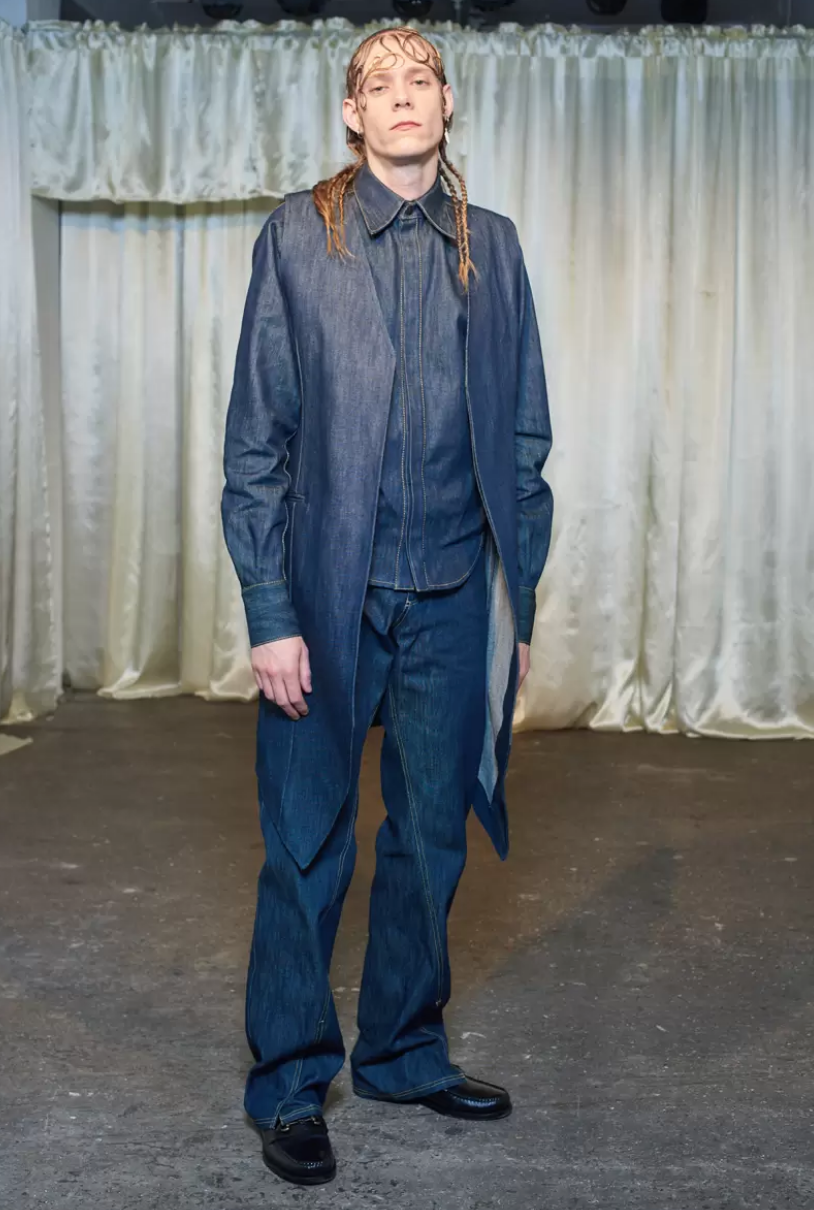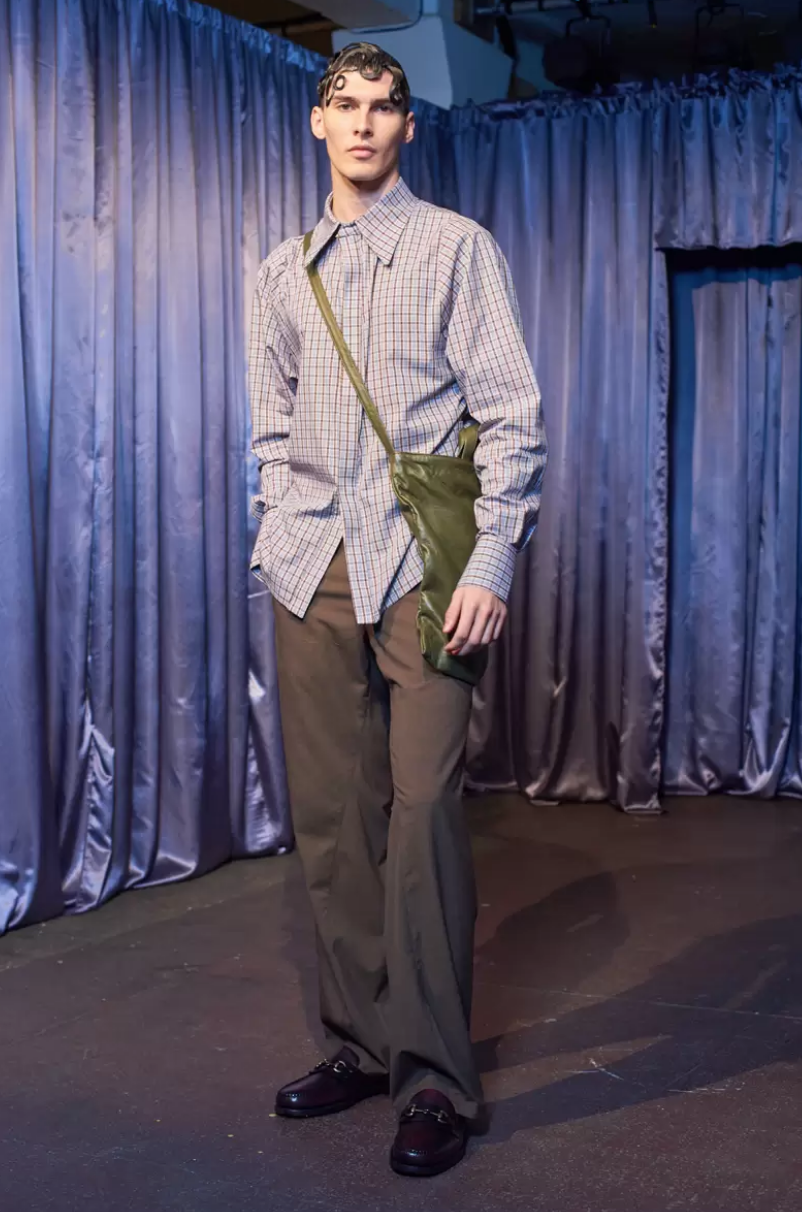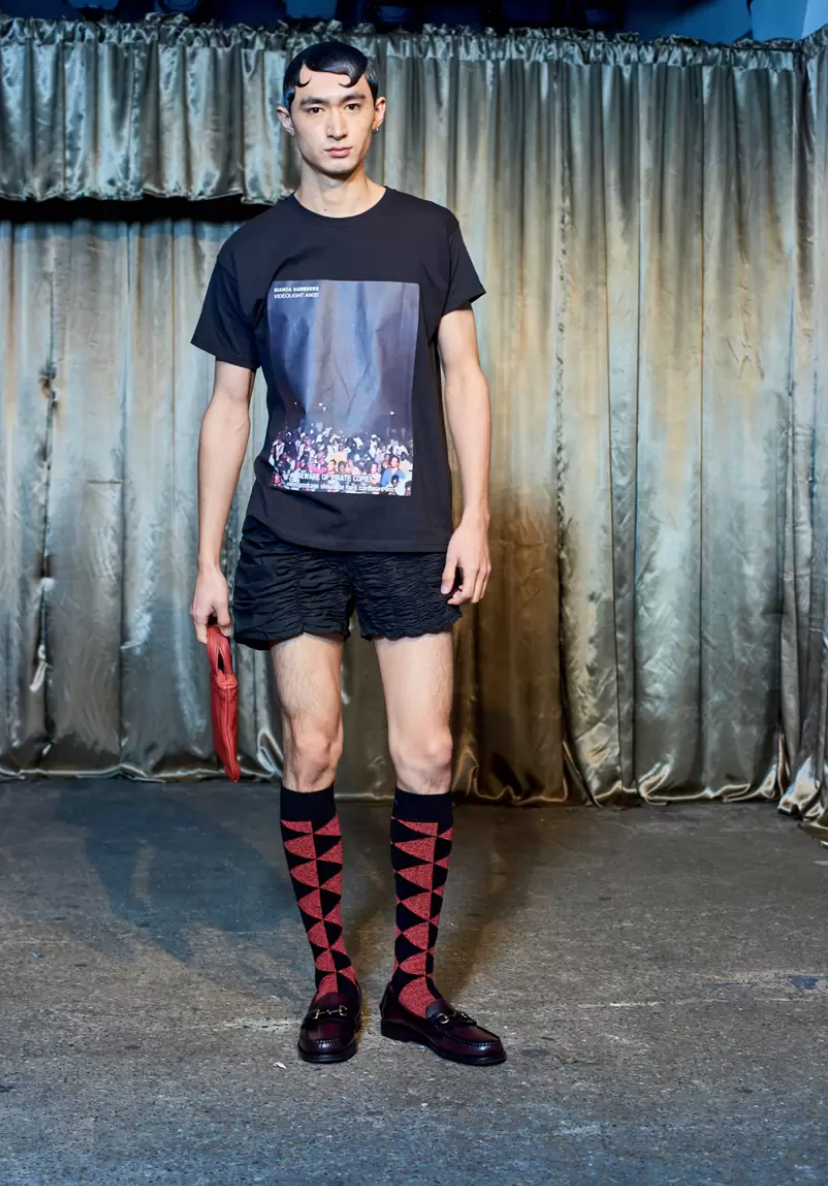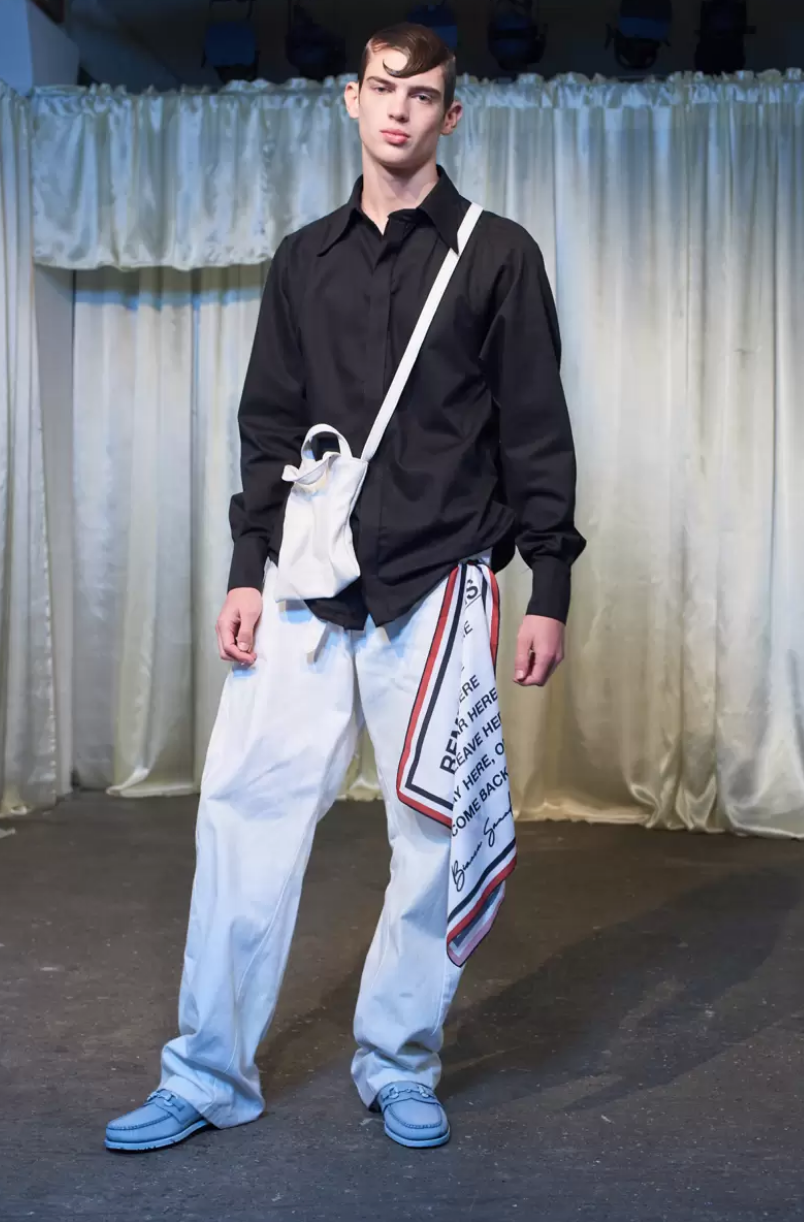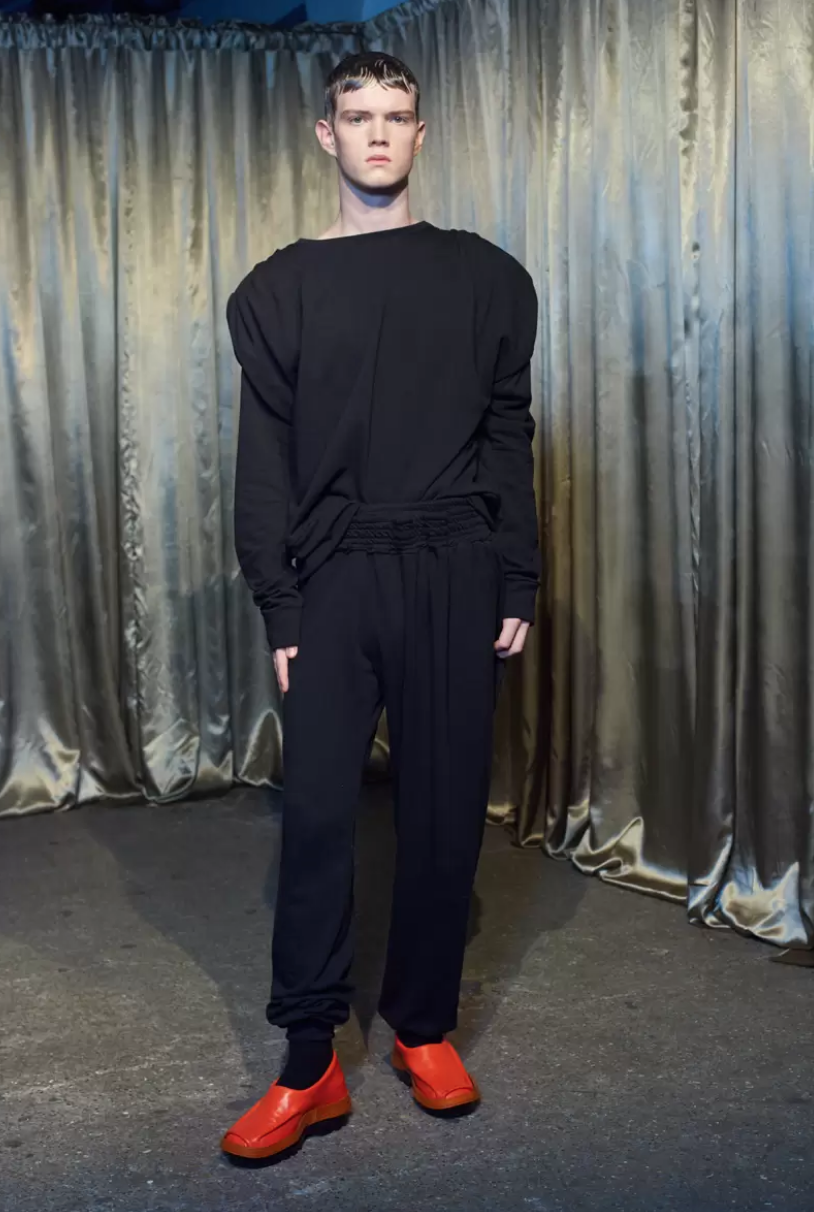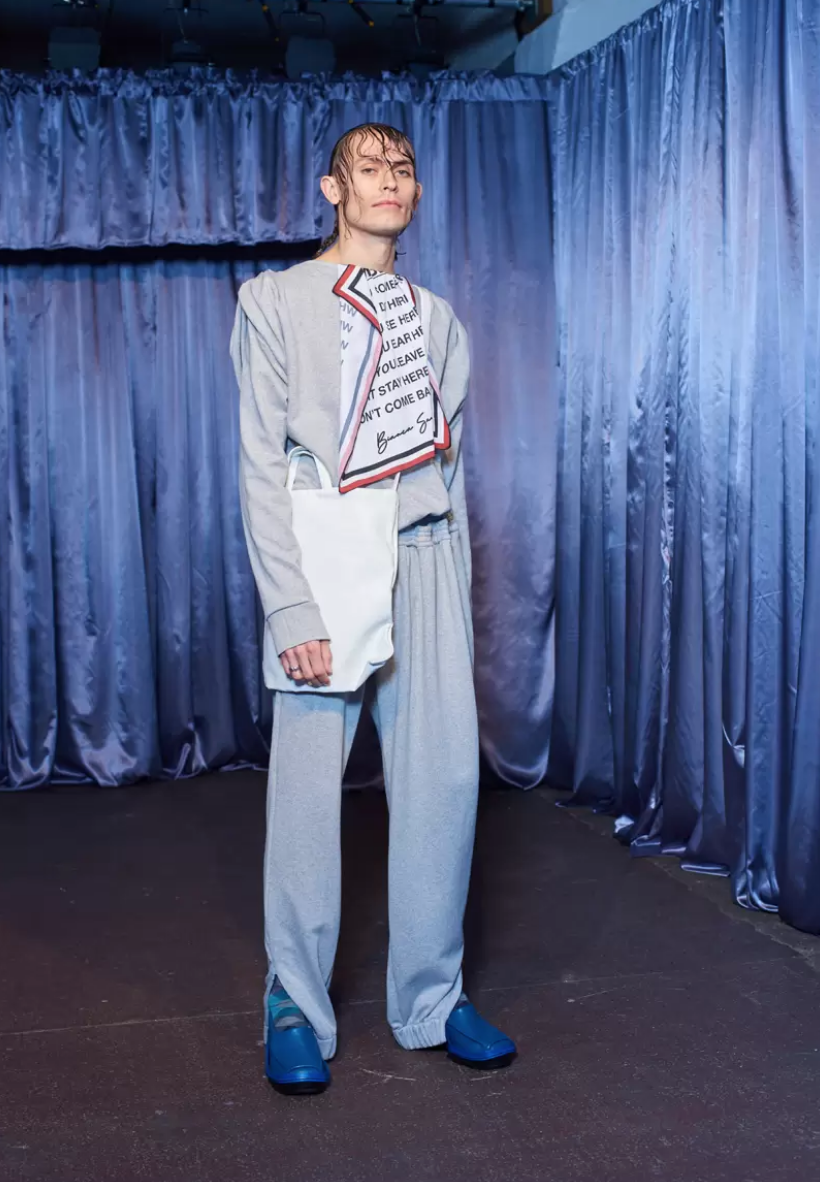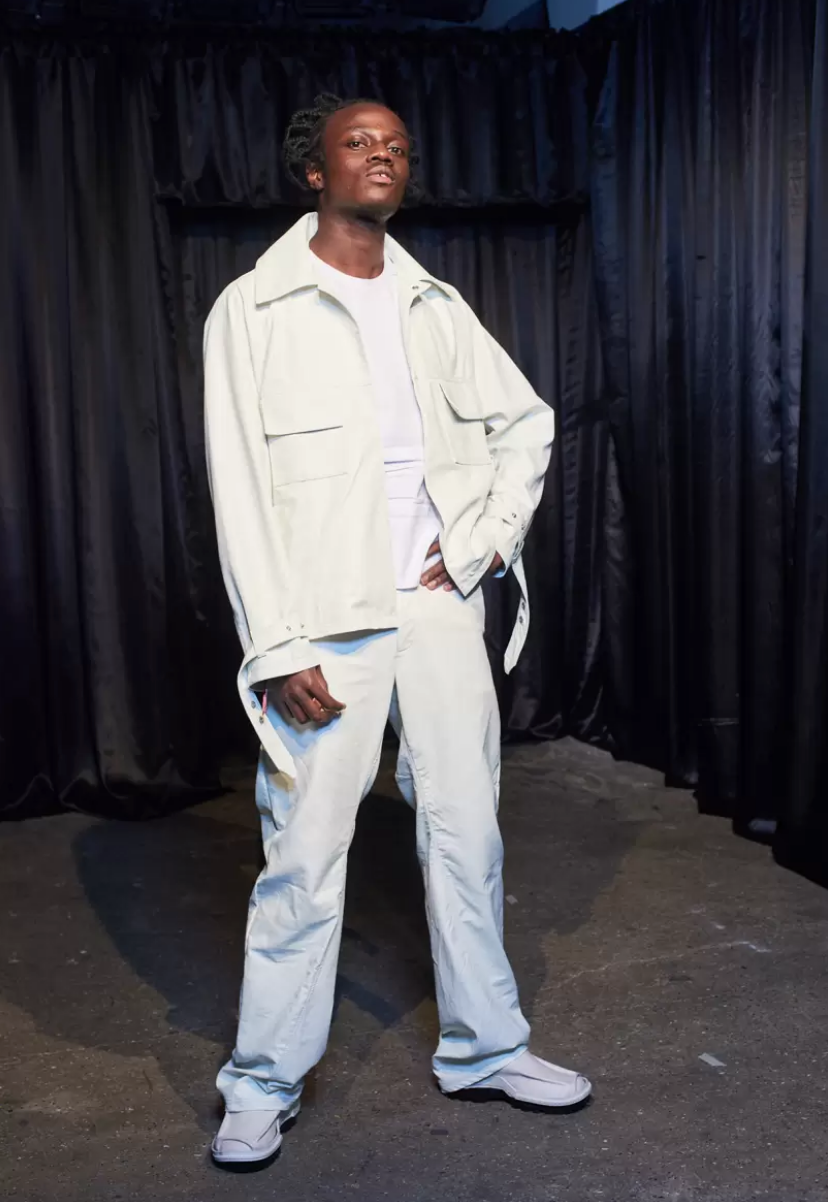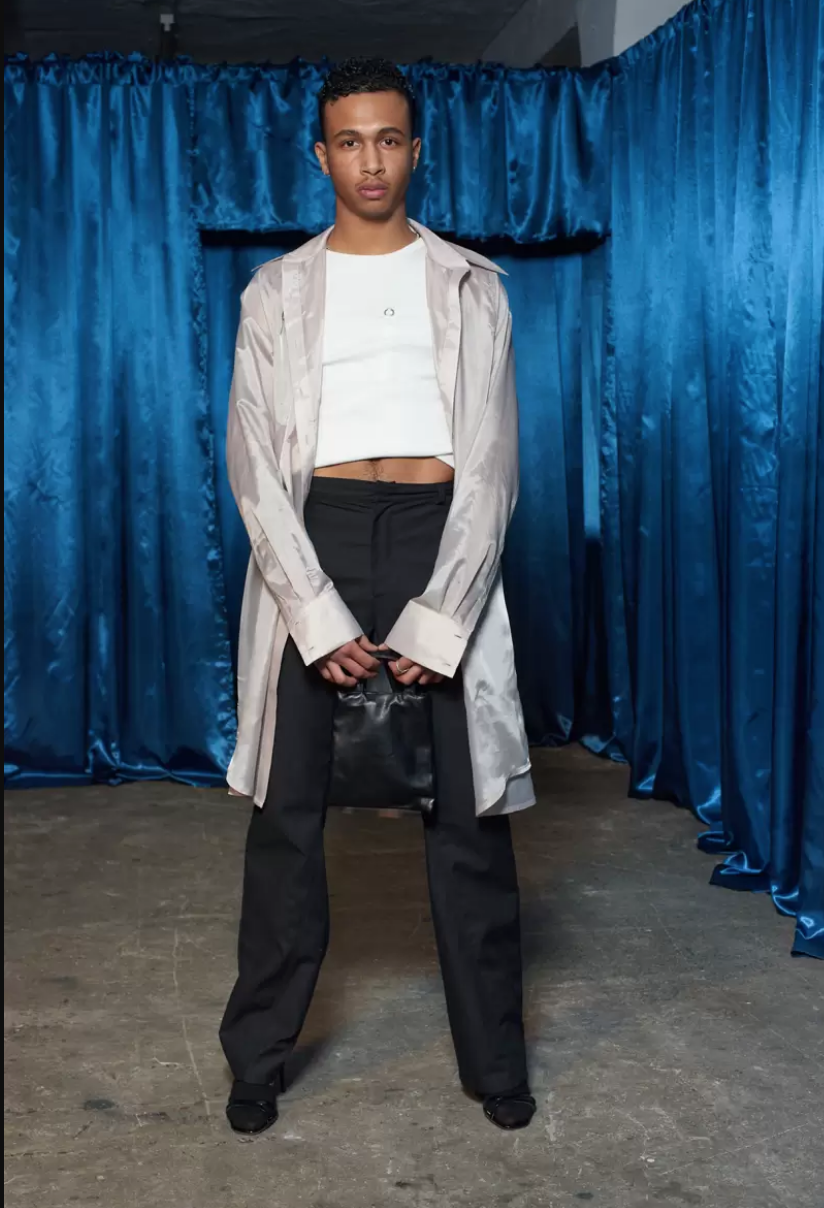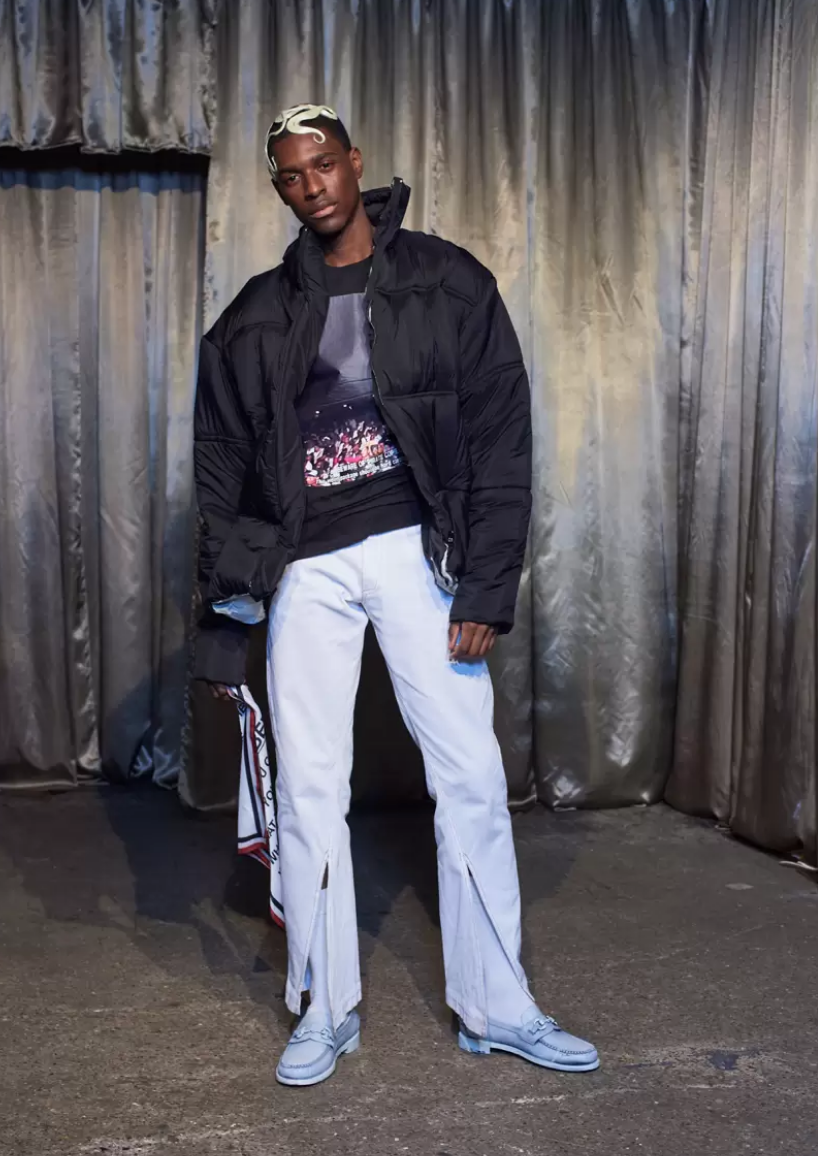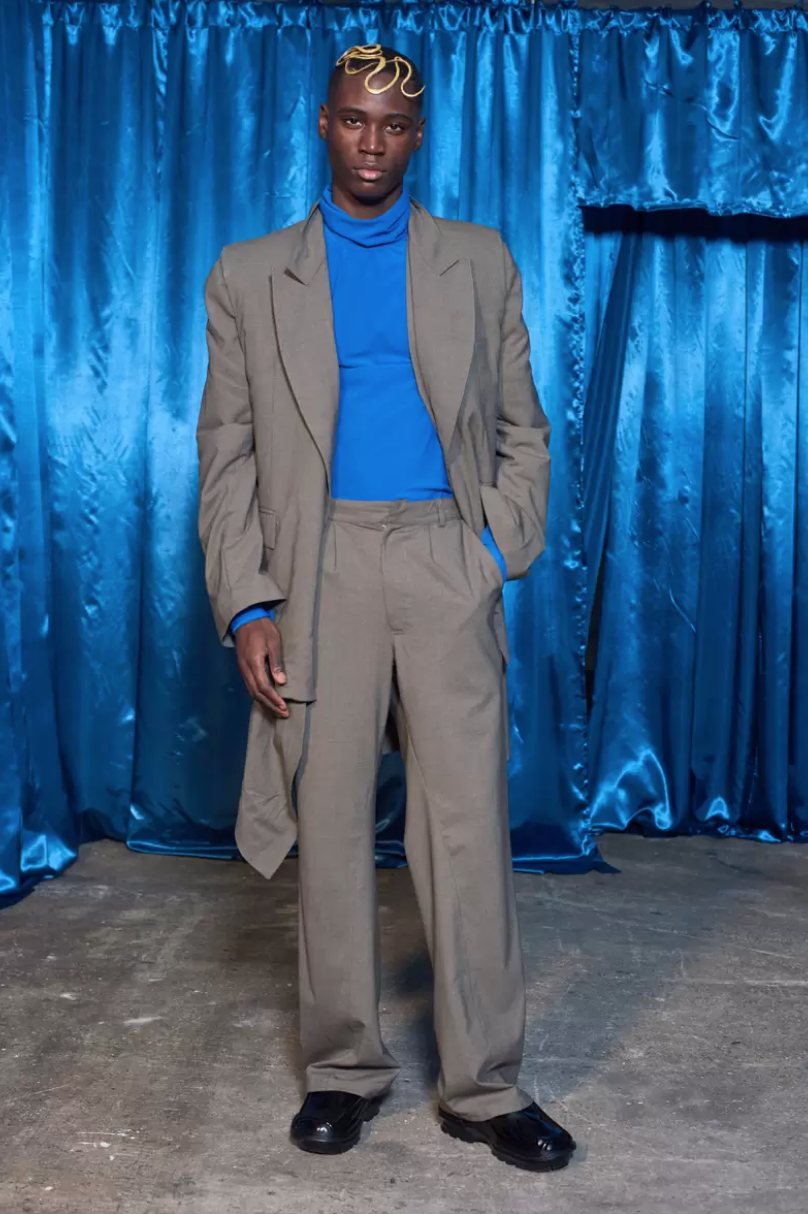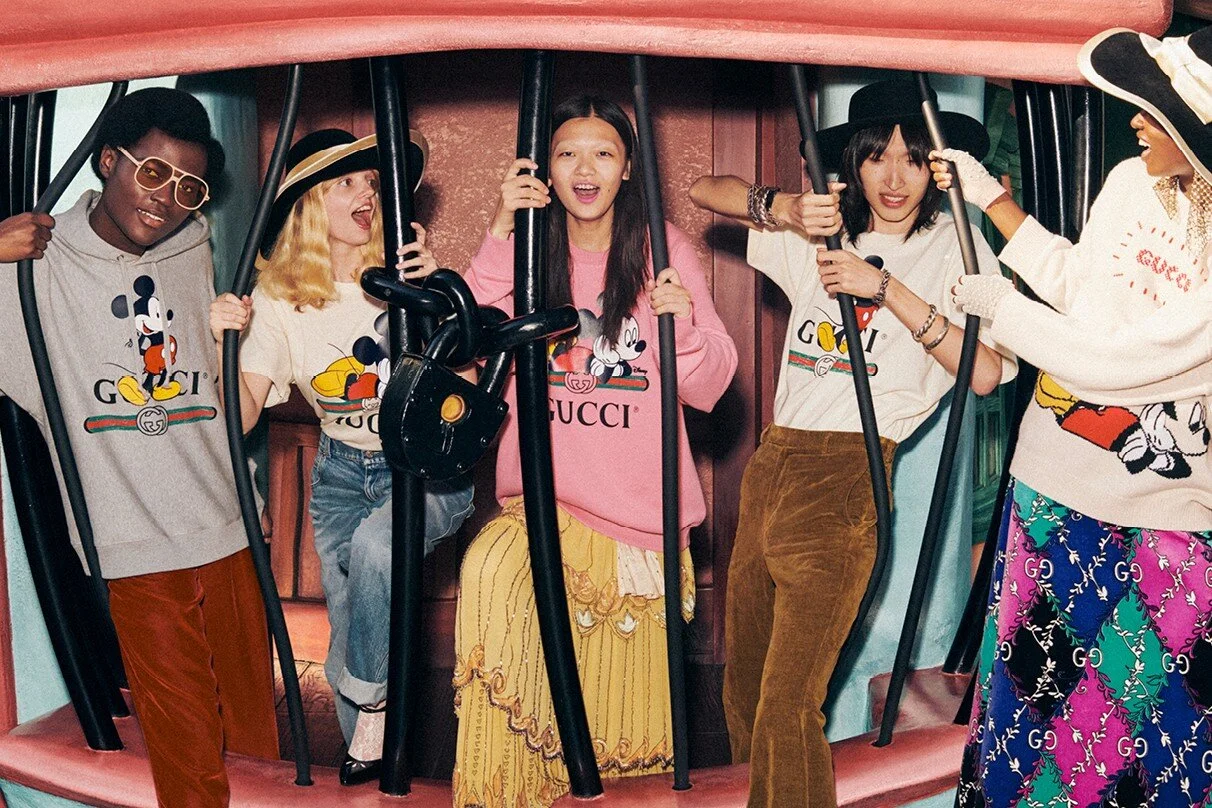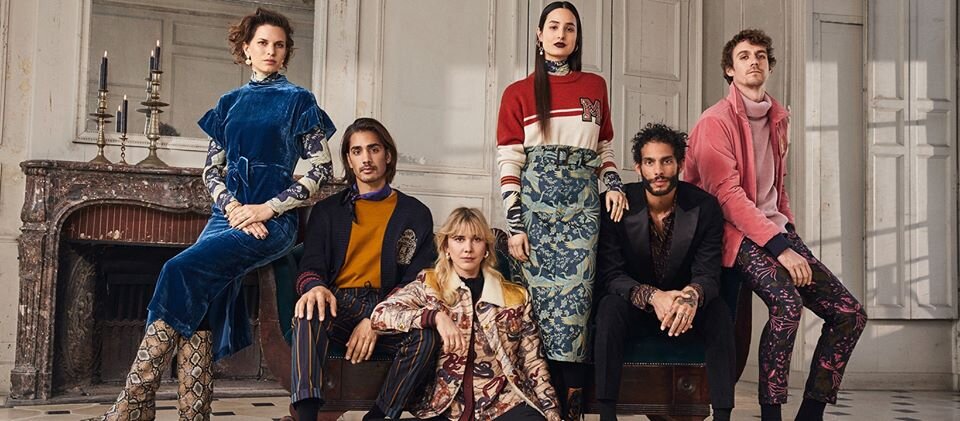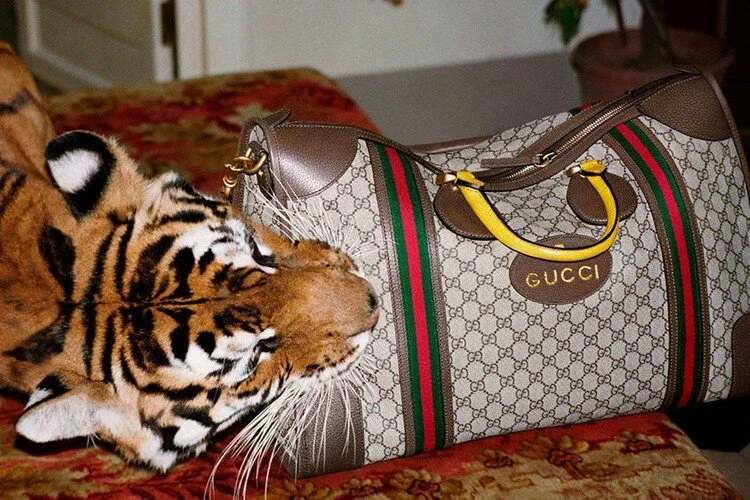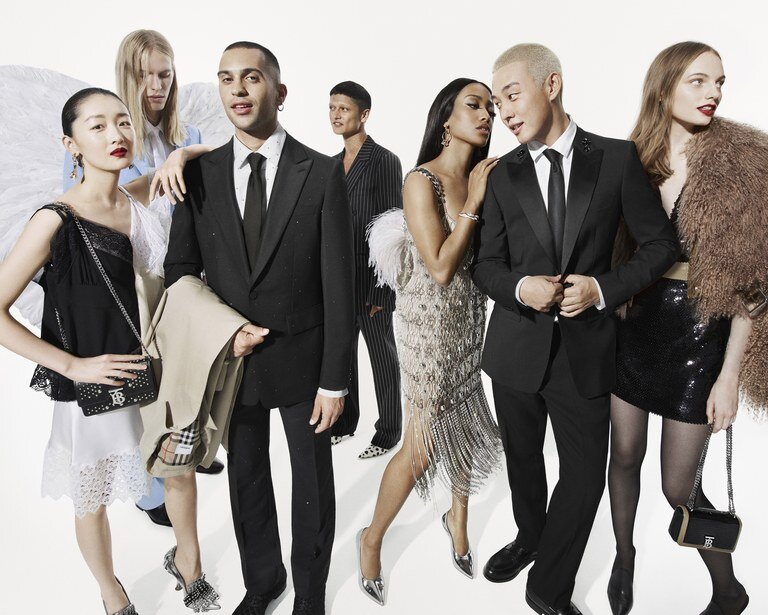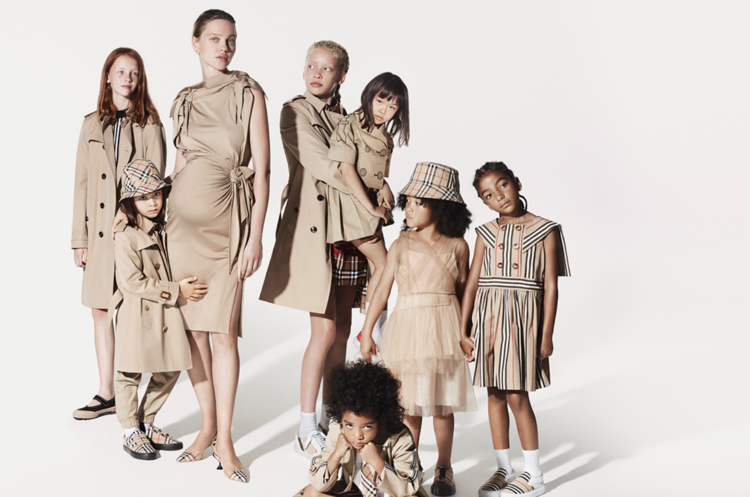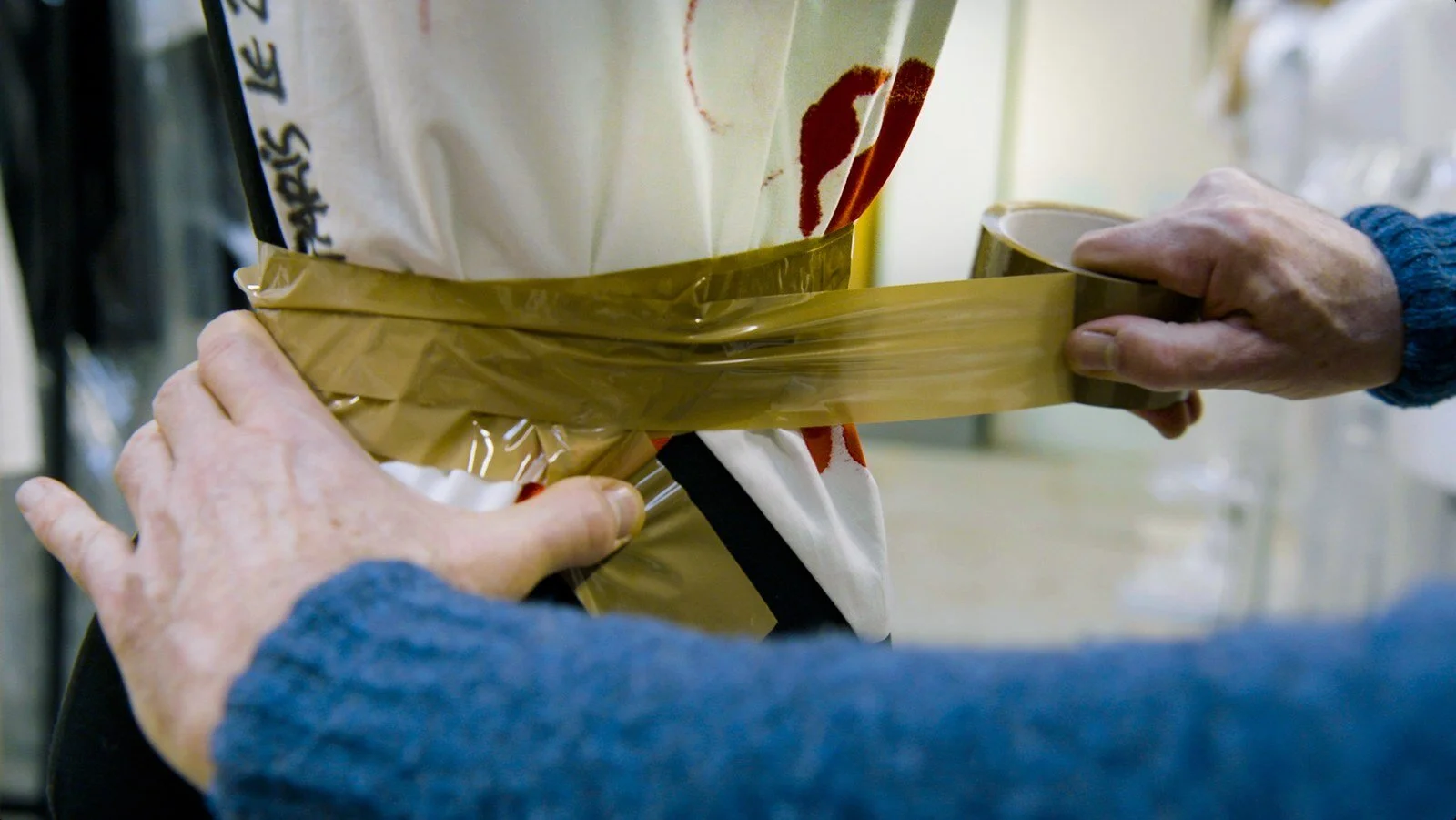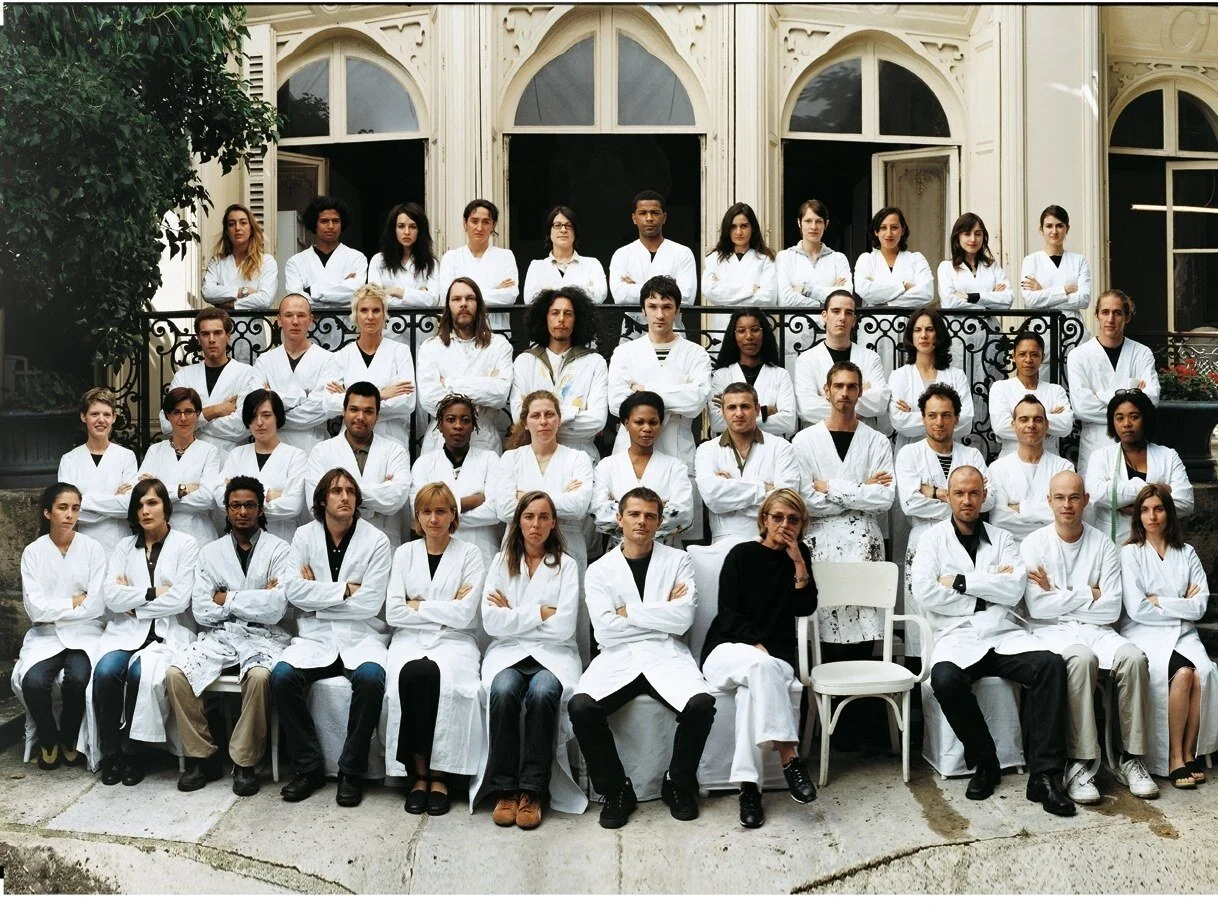E. Tautz Fall 2020 Menswear
/“Fashion, a world of consumption and destruction that heaps misery upon human beings and reaps damage on the planet on a scale almost no other industry comes close to matching.” Phew. It’s fair to say that Patrick Grant sounded pretty agonized in this E. Tautz collection’s press release. Happily, that agony resulted in a 26-look set of clothes that prompted, well, if not quite ecstasy, then certainly something much improved upon misery.
Grant is a designer whose refined throwback sensibility—Savile Row 2.0.2.0—very often results in beautifully silhouetted and fabricated menswear which sometimes skates perilously over the thin ice of anachronism. Here we saw it again in a collection that combined hints of lubricious decadence (especially the sexy, luxe-trashy asymmetrically paneled Louboutin pumps over tube socks) with wide-eyed schoolboy Englishness (or at least Edinburgh-flavored Englishness) in surgically cut post-Oxford bags and matchy-matchy tropical twill chinos and blousons.
As shoehorned-in via that opening quote, however, the emphasis here was on sustainability. About 50% of the collection Grant reckoned was made from repurposed fabrics, much of it provided by Astco, an industrial recycler whose boss happens to be a Grant bespoke client at Norton & Sons and who pitched in with the denim and shirting. Then there was the darning and patching, executed by students from the Royal College of Needlework (also an often-time collaborator of Sarah Burton’s). This saw irregular check patches insinuated upon herringbone outerwear, or herringbone patches upon check suiting, or layers of differently washed denim patched onto denim. In the suiting especially it was interesting, adding a depth of patina and pentimento, a roughness, to that most surface-defined of menswear genres.
Backstage Grant railed like a Shakespearean lead with a BBC reality show contract about the conflicting instincts that mutual fealty to fashion and ecological survival stir up, then disclosed he has started darning his clothes, which in turn prompted a very senior and glamorous Hearst editor to disclose that she now darns her pantyhose (is Hearst in trouble?). The fundamental point about E. Tautz is that if you like it then buy it because the quality is superb. You will wear it until you, not it, are due for recycling. Unless we all decide to go naked, that’s about as ecologically sound as fashion can be.
Source: Vogue
FASHIONADO

